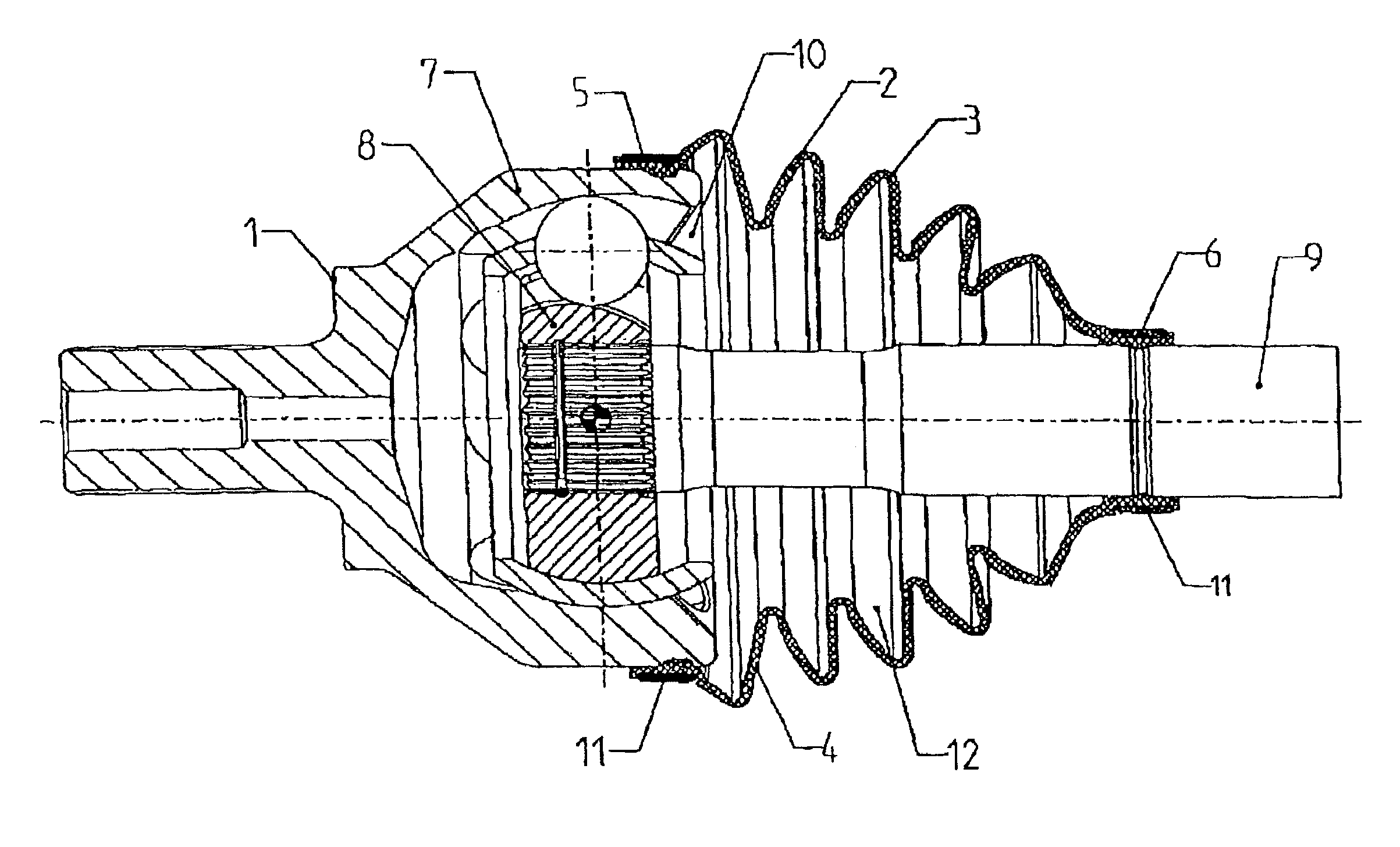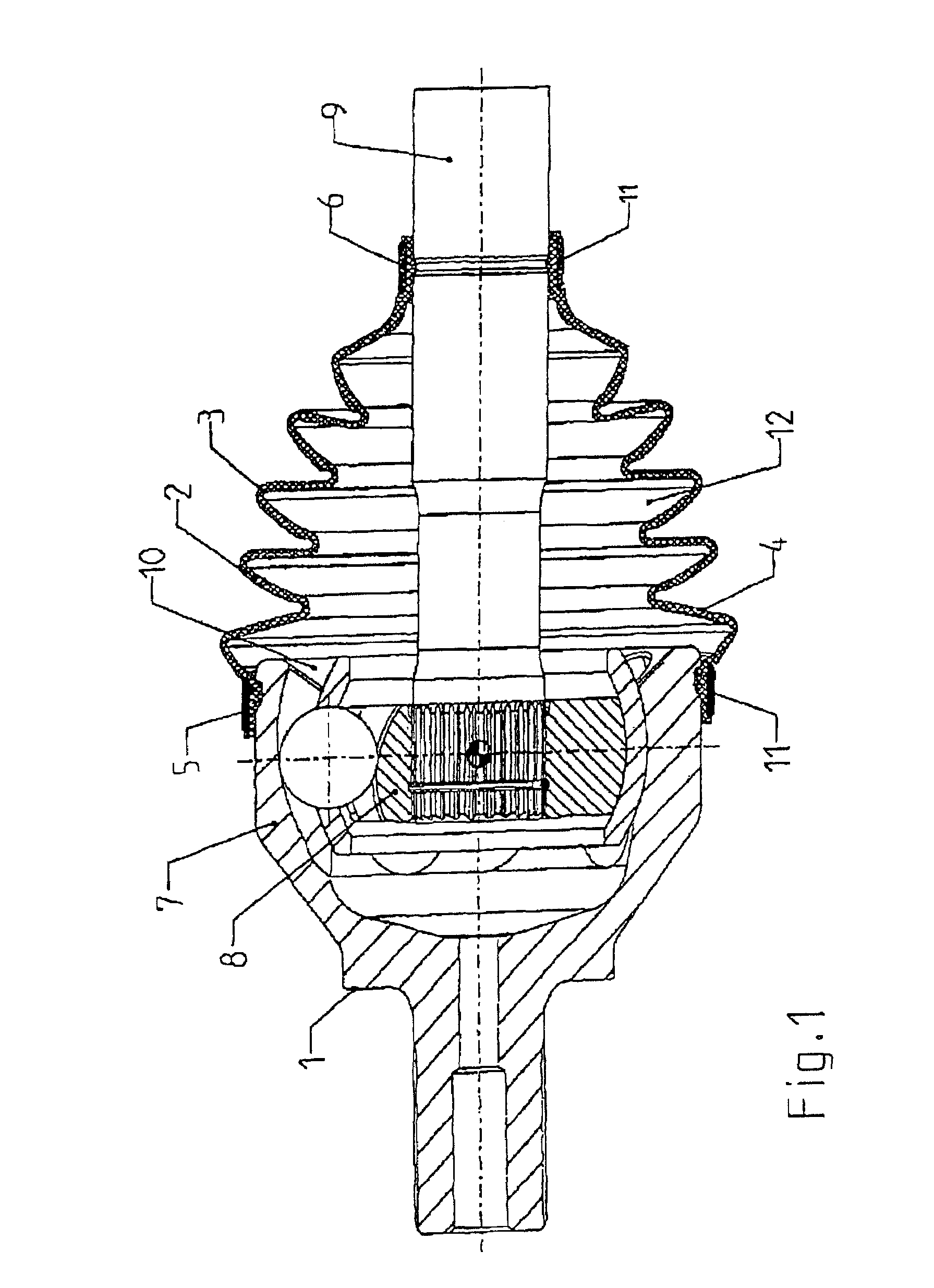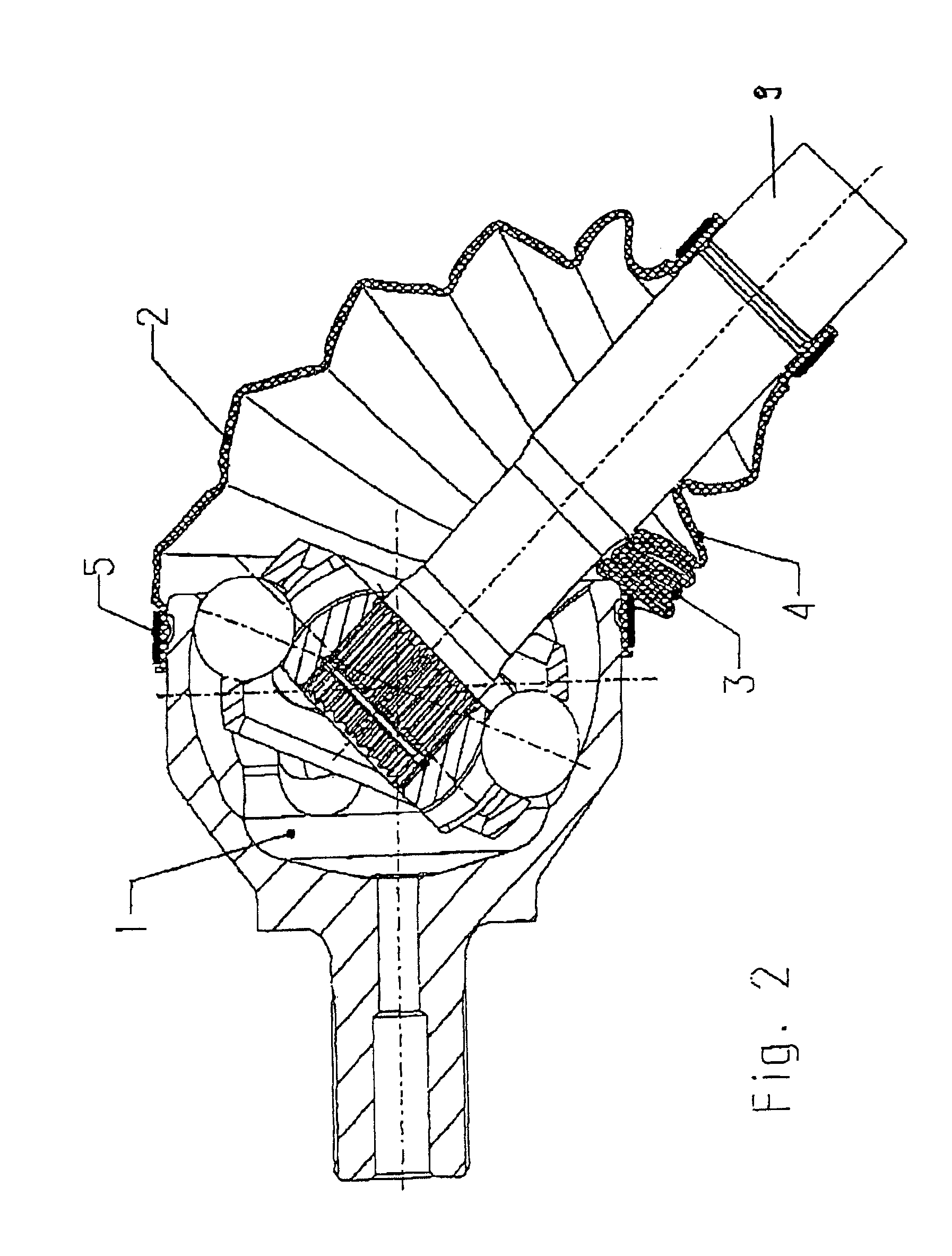Convoluted boot and constant velocity joint lubricant
- Summary
- Abstract
- Description
- Claims
- Application Information
AI Technical Summary
Benefits of technology
Problems solved by technology
Method used
Image
Examples
example i
[0062 is a TPE boot containing amide wax worked in via the granulate with a concentration of the amide wax beyond the saturation limit. From day 4 onwards, the boot developed permanent squeak noise under wet conditions. FIG. 3 also shows the loss of the protective coating. With this type of material, friction loss problems in the clamping-in zones are known.
[0063]Example II is a TPE boot without noise and abrasion protection components in the boot and lubricant. This boot also developed permanent noise under wet conditions.
example iii
[0064 is a TPE boot containing paraffin oil work in via the granulate with a concentration of the paraffin oil beyond the saturation limit. FIG. 3 shows clearly decreasing noise-free running times under wet conditions which indicate that the long-lasting protection is not sufficient. In some cases, with this type of material, too, friction loss problems were identified in the clamping-in zones.
[0065]FIG. 4 shows the results of examples IV and V in a graphic form. They show the influence of an additive provided on the front of the boot wall comprising hydrocarbon oils in the form of paraffinic mineral oils, naphtenic mineral oils, poly-alpha-olefins, polybutene, polyisobutelene, squalene or alkylbenzenes with straight or branched paraffinic side chains. The application time of the protective effect can be clearly seen in FIG. 4.
example iv
[0066 is a TPE boot with inventive additive in the lubricant, but without additive in the boot wall. The protective effect starts on day 3.
PUM
| Property | Measurement | Unit |
|---|---|---|
| Percent by mass | aaaaa | aaaaa |
| Percent by mass | aaaaa | aaaaa |
| Percent by mass | aaaaa | aaaaa |
Abstract
Description
Claims
Application Information
 Login to View More
Login to View More - R&D
- Intellectual Property
- Life Sciences
- Materials
- Tech Scout
- Unparalleled Data Quality
- Higher Quality Content
- 60% Fewer Hallucinations
Browse by: Latest US Patents, China's latest patents, Technical Efficacy Thesaurus, Application Domain, Technology Topic, Popular Technical Reports.
© 2025 PatSnap. All rights reserved.Legal|Privacy policy|Modern Slavery Act Transparency Statement|Sitemap|About US| Contact US: help@patsnap.com



